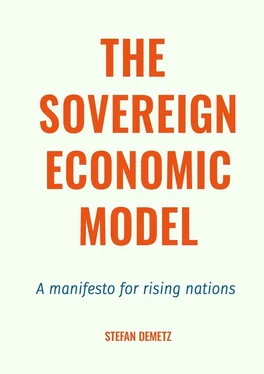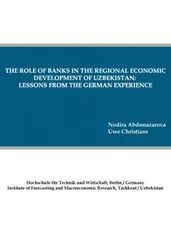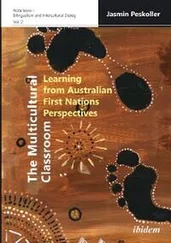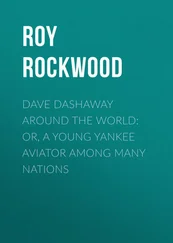Stefan Demetz - The Sovereign Economic Model. A manifesto for rising nations
Здесь есть возможность читать онлайн «Stefan Demetz - The Sovereign Economic Model. A manifesto for rising nations» — ознакомительный отрывок электронной книги совершенно бесплатно, а после прочтения отрывка купить полную версию. В некоторых случаях можно слушать аудио, скачать через торрент в формате fb2 и присутствует краткое содержание. ISBN: , Жанр: popular_business, на английском языке. Описание произведения, (предисловие) а так же отзывы посетителей доступны на портале библиотеки ЛибКат.
- Название:The Sovereign Economic Model. A manifesto for rising nations
- Автор:
- Жанр:
- Год:неизвестен
- ISBN:9785005666475
- Рейтинг книги:4 / 5. Голосов: 1
-
Избранное:Добавить в избранное
- Отзывы:
-
Ваша оценка:
- 80
- 1
- 2
- 3
- 4
- 5
The Sovereign Economic Model. A manifesto for rising nations: краткое содержание, описание и аннотация
Предлагаем к чтению аннотацию, описание, краткое содержание или предисловие (зависит от того, что написал сам автор книги «The Sovereign Economic Model. A manifesto for rising nations»). Если вы не нашли необходимую информацию о книге — напишите в комментариях, мы постараемся отыскать её.
The Sovereign Economic Model. A manifesto for rising nations — читать онлайн ознакомительный отрывок
Ниже представлен текст книги, разбитый по страницам. Система сохранения места последней прочитанной страницы, позволяет с удобством читать онлайн бесплатно книгу «The Sovereign Economic Model. A manifesto for rising nations», без необходимости каждый раз заново искать на чём Вы остановились. Поставьте закладку, и сможете в любой момент перейти на страницу, на которой закончили чтение.
Интервал:
Закладка:
Once the model has been implemented, only the real economy can create wealth. The primary and secondary sectors of an economy, agriculture and manufacturing, are the catalysts. The service sector adds services to a finished product and manages the surplus wealth. This sector includes sales, distribution, repairs, servicing, professional services, and finance • services that merely reuse and recycle money by shifting it in one or several directions while producing little or nothing. Perhaps incoming tourism is the only exception, as its geographic and cultural nature attract many people. This creates demand and thus the construction of infrastructure, real estate, and increased food production. The knowledge economy, as a quaternary sector, adds technologies like artificial intelligence (AI), Big Data, and robotics to automate mechanical and industrial processes by making finer use of data.
Under the Sovereign Economic Model, a strong distinction will be drawn between different wealth operators:
• Wealth creators produce a typically physical object using labor and raw resources.
• Wealth recyclers add services to a finished good or wealth by recycling wealth.
• Wealth consumers produce unproductive output that consumes wealth.
• Wealth destroyers render a physical object less valuable, e.g., natural disaster, wars, inefficient government, crime, over-taxation, misallocation of funds, and bankruptcies.
The concept of wealth is truly important as some business activities create real wealth, while others do not. A sovereign country creates the right conditions to make creation of wealth more convenient.
Sovereign Economic Margins
Let us suppose a carmaker in Country 1 that produces and sells a cool million units of $100,000 cars. It has produced $100 billion in products. As a finished good, this number will count toward GDP. Consider two scenarios:
1. All suppliers are building all of the vehicles’ parts in the country, but said business activity is not included in GDP calculations because it is the last stage of production.
2. All suppliers’ parts are built in another country, so the production of cars is counted in Country 1 as $100 billion of GDP and the suppliers’ business is counted as $70 billion of GDP in Country 2 because it is the last stage of production in that country.
In Scenario 1, $100 billion is counted, all-inclusive, while in Scenario 2, $100 billion is counted for Country 1 and $70 billion is counted for Country 2, a total of $170 billion.
What happened in reality? In Country 1, $30 billion of wealth was created; in Country 2, $70 billion was created. So Country 1 was credited with $100 billion of GDP, but only created $30 billion of wealth. In fact, Country 2 produced 70 percent of the wealth, more than double that of Country 1.
The Sovereign Economic Model prefers to focus on wealth creation and not just meaningless GDP numbers. This concept can be called the sovereign economic margin. That is why, with industrialization and import substitution policies, wealth is created. It happens with the production of final goods and the sub-production of intermediate goods or parts within a country. Anything built in another country and imported is wealth for the producing foreign country. Employment is wealth. Employment implies the use of labor for useful productive activities, so the more productive workers, the more wealth creation increases. Evidently, not all employment means doing productive tasks; some types even destroy wealth, such as in these cases:
• The cost of employment is higher than the wealth produced (e.g., communism).
• Bureaucracy is slowing down wealth creation.
• Wealth is offset by productive activities with high adverse social costs.
As with any other improvement process, the reduction of defects, i.e., unproductive economic activities, is a significant step in the right direction.
Wealth Creation Instead of GDP as a KPI for Economic Policies
Understanding the principles of wealth creation allows governments to devise economic policies and related legal and fiscal frameworks to stimulate creation and creators of wealth. Also, their policies must rein in wealth wasters and wealth destroyers. While GDP is easier to count and show off, it is a highly unreliable accounting method. It is often abused and massaged to suit political needs. Unexpectedly, Japan’s longtime manipulation of GDP numbers was recently exposed. Wealth creation is unquestionably a more precise indicator.
There are four horsemen of wealth creation:
1. Labor, with raw resources, is an essential input for production that transforms resources from natural elements into intermediate or finished goods. It includes both physical and intellectual work. Tools, machinery, and equipment can help increase the amount of production a worker can output. This increase is called productivity.
2. Raw resources, with labor, are essential inputs for production as the basic building blocks to manufacture any category of goods. They may be either natural elements or energy sources.
3. Capitalis an important catalyst of production. It finances increased labor, raw resources, or knowledge to produce a larger number of items or items with a higher value, creating superior levels of wealth. Capital by itself cannot be wealth.
4. Knowledgeallows the production of increasingly complex, higher-wealth products. High-tech industries need input from thousands of highly educated and skilled specialists. Knowledge can therefore be a consequence of long experience doing a particular job.
These four input factors create wealth. Offshoring manufacturing and production moves the wealth creation process to those countries. In times when a knowledge economy prevails, offshoring outsources the knowledge and teaches it to a potential competitor, so it is always a bad idea in the long term.
Business Environment in a Sovereign Economic Model
«What’s in for me?» is the question most ask. For every rule and regulation, people and business evaluate the changed status quo and ask this question. While the government tries to use carrot and stick and to balance pros and cons with the interests of various stakeholders, the fact of life is that some will win and some will lose.
In state capitalism, the government takes ownership or majority control of companies in strategic sectors of the economy. This creates a big headache for private companies in that sector, who are asking what’s in it for them. If the state-owned enterprises are non-aggressive and compete fairly, not using specially biased laws in their favor, competition is normal, as with other private companies. They may sometimes even collaborate to create common tech or cooperate with foreign operations. In fair conditions, the government is interested in a tide that lifts all boats. This is the case in Russia, with Novatek as the largest LNG exporter and Lukoil as the second-largest oil company; both companies happily coexist with state giants Gazprom and RosNeft. On the contrary, if the government behaves aggressively and moves into some sectors, companies and their owners must drastically adapt. Some might even have to sell a majority stake or the entire company at a fair market price because they cannot resist the onslaught from the government.
In the Sovereign Economic Model, the economic KPI is wealth creation. The sectors producing wealth are agriculture (first sector of the economy), industry (second sector) and the knowledge economy (quaternary sector). Therefore, these fields will receive the most state support, effort, and attention. Industrialization, exports, and import substitution are policies meant to drive real production and thus the real economy. Consequently, the service sector will not get preferential treatment. Similar activities that do not bring prosperity to the country and its people are also excluded. Economic policies should favor large capital flows into wealth-creating industries and out of less productive ones. Inefficient industries and unproductive industries will suffer the most as the state limits and curtails them. Such a situation is noticeable in China, where the government has cut back on economic excesses, speculation, and other systemic imbalances.
Читать дальшеИнтервал:
Закладка:
Похожие книги на «The Sovereign Economic Model. A manifesto for rising nations»
Представляем Вашему вниманию похожие книги на «The Sovereign Economic Model. A manifesto for rising nations» списком для выбора. Мы отобрали схожую по названию и смыслу литературу в надежде предоставить читателям больше вариантов отыскать новые, интересные, ещё непрочитанные произведения.
Обсуждение, отзывы о книге «The Sovereign Economic Model. A manifesto for rising nations» и просто собственные мнения читателей. Оставьте ваши комментарии, напишите, что Вы думаете о произведении, его смысле или главных героях. Укажите что конкретно понравилось, а что нет, и почему Вы так считаете.












